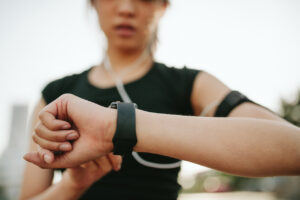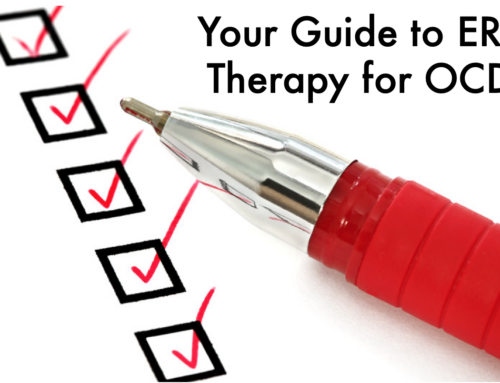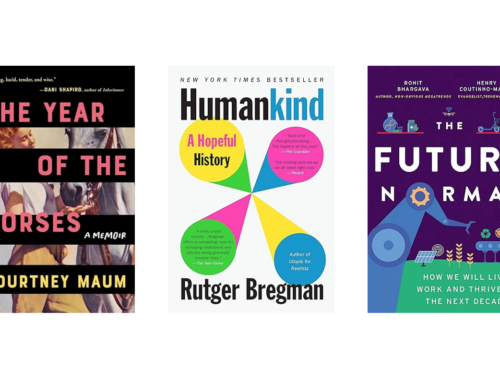I’ve been an early adopter when it comes to wearable technology, going back fifteen plus years when I had a Zeo headband that tracked my sleep. Since then I’ve tried wearables worn around the finger, head, chest, wrist, and ankle with varying degrees of success. In this blog post, I’ll offer criteria you can use to make decisions about whether wearable technology might be right for you and your OCD recovery while sharing examples from my own experience about how OCD, self-criticism, and wearable technology can interact.
Is the wearable accurate and how is that affecting OCD?

My first criteria when looking at a wearable is accuracy. Last year I was using what I’ll call Wearable 1 (W1), and it kept telling me I was having heart rate spikes throughout the day. These results were concerning, so I put on two older wearables, giving me three heart rate readings simultaneously from different parts of my body. Funnily enough, the results over extended periods of time were all different. W1 showed a spike while W2 showed a steady heart rate and W3 showed a slight increase. Which one was right? Who knows!
My conclusion: either two of the three devices or perhaps all three weren’t accurate, at least on my body. And if one of them was showing accurate results, I had no way to determine which one that was.
My OCD did wonder (of course) whether it was my heart—and not the wearable—that wasn’t accurate, so to speak. Since I’d had recent EKGs and a physical, I decided that it was most likely the device that was the problem. But it’s important to keep in mind the accuracy issues wearables might have when you’re thinking about whether one is right for you.
Is the wearable’s data/app customizable or is using it becoming compulsive?
My relationship with W1 started out swimmingly, however. I loved the data it provided, especially the sleep data. Until I didn’t.
As long as the data W1 provided was mostly positive, I enjoyed using it. But W1 changed their sleep algorithm, and suddenly it looked like I wasn’t getting a good night’s sleep. The more OCD and I saw this disappointing sleep data, the more worried we became about sleep, and yup, you guessed it, the worse my sleep became. I ended up in a downward spiral where both OCD and I felt desperate to get a “good night’s sleep” according to W1, and night after night, it didn’t happen.
I tried to turn off the sleep data so that I could focus on the more positive data W1 was presenting, but there was no way to do so. Every time I opened the app, there the data was, spotlighting how badly I’d slept! I asked Support about customizing my app to hide this data, and they told me that wasn’t possible. For me, however, being able to customize the data I saw was crucial so that I wasn’t using it compulsively and thereby fueling downward spirals that were affecting both my physical and mental health.
This was unfortunately one more mark against W1, and when I stopped using it altogether, the sleep issues that had emerged after their algorithm changed magically disappeared.
Does the wearable motivate you to make positive, achievable changes or does it fuel self-criticism?
In the first half of my relationship with W1, it helped me recognize that if I spent time relaxing before going to bed, I slept better. While this seems like “duh! of course!” it hadn’t been obvious to me, and knowing this fact has changed the way I run my evening routine. I’m now motivated to take some time to sit, read a novel, and decompress before getting ready for bed, even though all that doesn’t always happen (and I’m self-compassionate when it doesn’t).
However, shortly after experiencing the two issues above with W1, I encountered the final and fatal issue: they decided to show me how stressed I was each day. And by the way, they presented this stress as a negative—something that I needed to work on changing in real-time, a viewpoint I don’t share, preferring to take Dr. Kelly McGonigal’s “Make stress your friend” perspective. For me, the stress feature wasn’t motivating me to make a positive change—it was fueling self-criticism and shame by pointing out a supposed flaw that I needed to fix immediately! Even though …. the majority of the time when it said I was stressed, I didn’t feel stressed at all (making me also question its accuracy).
Questions to ask yourself
Knowing how OCD and self-criticism can co-opt wearables for their own purposes, you might want to consider the following questions if you’re considering a wearable:
- What do I want to measure and why?
- How accurate is the wearable in measuring these things? Is it accurate during the activities that matter to me, eg during sleep or exercise or throughout the day?
- Can I customize the app to see only what I care about?
- Why do I want the wearable? Will it help me achieve particular goals? Do I need one for medical purposes? Do I want one because it’s cool and sounds interesting? Or do I want one because OCD thinks the wearable will give it certainty?
- If I need a wearable for medical purposes, which one does my doctor recommend and how does s/he recommend that I use it?
- Am I willing to deal with potential inaccuracies/uncertainty/OCD triggers to get data that matters to me?
- How will the data that the wearable provides help me to make positive changes in my life?
OCD and wearable technology
Even though I still have my wearables, they’re in a box under my nightstand. Why? Because over time I’ve noticed that the devices eventually begin to resemble my OCD by picking out all the things I just can’t seem to get right. And hey, my OCD doesn’t even charge me a monthly subscription fee to tell me all I’m doing wrong, so I really don’t need to be paying for that information! 😆
For some people, wearable technology can be fun and useful for achieving health-related goals. Others might think the data they get is worth the trade offs, including potentially triggering health anxiety, and they’re willing to tackle uncertainties, such as determining if something needs medical follow up and/or if it’s an opportunity to transform an OCD trigger into ERP. However, for some of us, wearables can cause unnecessary suffering and annoyance. But I’ve tried to turn not using a wearable into its own exposure and response prevention (ERP) therapy exercise, as I’m choosing on purpose to not know how I’m sleeping, what my heart rate is, and how many steps I’m taking, and to live happily with that uncertainty.
Learn more about taming OCD
To learn more about how I used ERP to live in a world of uncertainty and be happy anyway, see Chapter 13 in Is Fred in the Refrigerator? Taming OCD and Reclaiming My Life. Click here to purchase a copy.
Sign up for my Shoulders Back! newsletter to receive OCD-taming tips & resources, including notifications of new blog posts, delivered every month to your inbox.
My blogs are not a replacement for therapy, and I encourage all readers who have obsessive compulsive disorder to find a competent ERP therapist. See the IOCDF treatment provider database for a provider near you. And never give up hope, because you can tame OCD and reclaim your life!
Photos © iStockPhoto / Jacob Ammentorp Lund







Leave A Comment